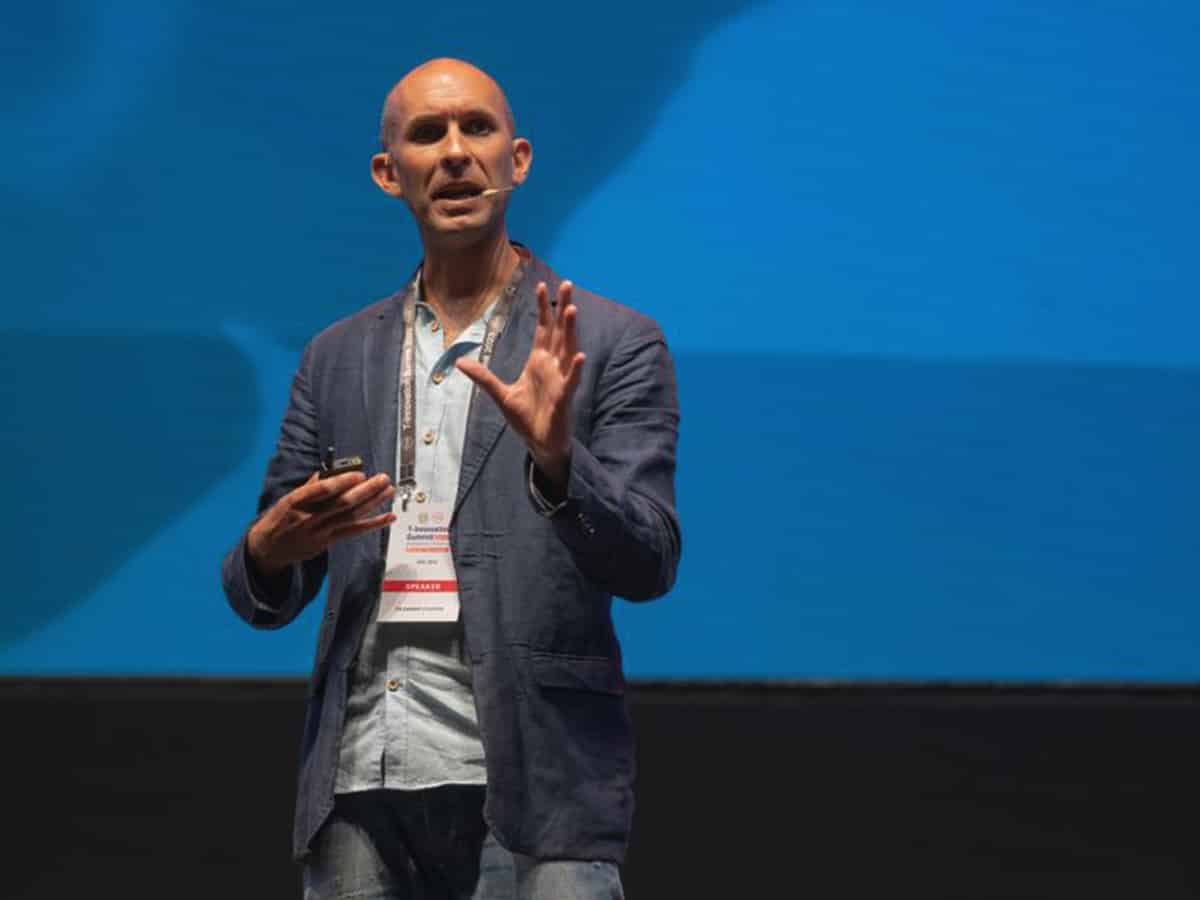
“With AI (Artificial Intelligence) we are building cognitive tools that will supplement humans and not substitute us,” says Dr Anil Seth, a noted neuroscientist from the United Kingdom.
The Indian origin, author of the New York Times best seller, Being You, Anil Seth is in the limelight with the huge buzz created around AI on the diverse impact it is going to have on humans and the claims by giant Tech companies like Microsoft and Google.
Dr Seth’s breakthrough work is creating waves in our understanding of what it means to be human, how consciousness is the frontier on which these ideas will play out, and what, if any, are the limits to human innovation in the emerging world of AI.
Hailing from Uttar Pradesh, Dr Seth is considered an authority in the field of cognitive and computational neuroscience. His current project titled The Perception Census has participants from over 100 countries. It is a unique online study of perceptual diversity and is part of Dreamachine Initiative. “I want more Indians to contribute to this project,” he said while speaking on the topic ‘The Plastic Brain’, at the T Innovation Summit 2.0 recently.
The event was organised to commemorate the first anniversary of the launch of the T-Hub, claimed to be the world’s largest innovation centre. A special session called the “Gladiators of the Mind” featured Dr Seth, Sir Marcus du Sautoy, a noted mathematician from Oxford and Louise Leakey, Paleontologist from Kenya and a third generation from the renowned family of Leakey’s, whose contribution to reconstruction of the evolution of human being is widely acknowledged.
The Plastic Brain
Dr Seth is a Professor of Cognitive and Computational Neuroscience at the University of Sussex, where he is also Co-Director of the Sackler Centre for Consciousness Science. In addition, he is Co-Director of the Canadian Institute for Advanced Research (CIFAR) Program on Brain, Mind and Consciousness.
The human brain remains science’s most challenging frontier and it’s the playing field of the brilliant and highly celebrated British neuroscientists. This was how the T Hub introduced the neuroscientist Dr Seth.
Anil Seth’s biggest claim is that the human brain is a predicting machine. We dream up both reality and about our self in it, is an idea whose implications are hard to match, say experts in the field.
The human brain consists of 86 billion neurons and an extensive communication network. “We are social creatures. This prediction approach is what we always experience all the time. The brain is making predictions about the cause of our sensory signals,” says Dr Seth.
“Our minds invent for us a universe of colours, sounds, shapes and feelings through which we interact with our world and relate to each other. We even invent ourselves, our reality, then, is an illusion and understanding this involves tackling the thorny issue of consciousness, says Dr Seth in an article in The Guardian.
In his popular book Being You, he proposes that perception does not happen outside-in, with external physical signals being detected and processed to constitute our view of the world, but rather inside-out.
Dr Seth sees human emotions as being “control-oriented perceptions which regulate the body’s” functions like temperature, blood sugar, blood pressure etc. The notion of self too is a prediction of the mind. And like any prediction, it can disintegrate to various degrees—most completely under the influence of large doses of psychedelics, or due to damage or disease, he argues in the book.
He proposes that we do not see, hear, or smell the world as it is, but rather that we live in what he calls a “controlled hallucination.” Hallucination, according to him is ‘Uncontrolled perception’. In contrast, perception is ‘Controlled hallucination.’ The way one perceives self and the world.
Dr Seth defines the brain as mindware and not software. Having a body is what’s there while being a body is what’s going on within. The human being is a beast machine and therefore it’s ‘Wetware’ and not ‘Hardware’, he explains.
The brain is also a highly symmetric system with the ‘Visual Cortex’ being the most symmetrically wired. It works through electrical impulses. The brain’s primary function is to control the bodies’ essential variables. This it does by connecting our consciousness with biology.
Despite much progress, the scientific field of consciousness is still in its infancy. For long it has been the preserve of philosophers, poets, artists etc. but now neuroscientists are intensely engaged in this field. Among them, Dr Seth is a pioneer.
Some neuroscientists have proposed specific regions of the brain where consciousness happens. Some regions which control certain functions like learning, smell, emotions etc. Dr Seth does not believe in the concept of the Right and Left divisions of the brain and the correlations. He lends more emphasis on the abstract mechanisms of perception and how they impact different aspects of our consciousness.
Dr Seth is a popular author, TED X speaker and has been doing pioneering work in neuroscience for the past two decades.



